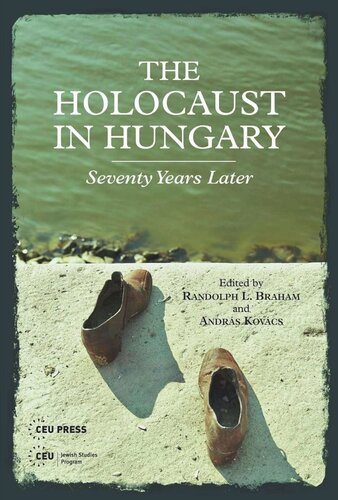

Most ebook files are in PDF format, so you can easily read them using various software such as Foxit Reader or directly on the Google Chrome browser.
Some ebook files are released by publishers in other formats such as .awz, .mobi, .epub, .fb2, etc. You may need to install specific software to read these formats on mobile/PC, such as Calibre.
Please read the tutorial at this link: https://ebookbell.com/faq
We offer FREE conversion to the popular formats you request; however, this may take some time. Therefore, right after payment, please email us, and we will try to provide the service as quickly as possible.
For some exceptional file formats or broken links (if any), please refrain from opening any disputes. Instead, email us first, and we will try to assist within a maximum of 6 hours.
EbookBell Team

4.7
36 reviewsAccording to most historians, the Holocaust in Hungary represented a unique chapter in the singular history of what the Nazis termed as the “Final Solution” of the “Jewish question” in Europe. More than seventy years after the Shoah, the origins and prehistory as well as the implementation and aftermath of the genocide still provide ample ground for scholarship. In fact, Hungarian historians began to seriously deal with these questions only after the 1980s. Since then, however, a consistently active and productive debate has been waged about the history and interpretation of the Holocaust in Hungary and with the passage of time, more and more questions have been raised in connection with its memorialization. This volume includes twelve selected scholarly papers thematically organized under four headings: 1. The newest trends in the study of the Holocaust in Hungary. 2. The anti-Jewish policies of Hungary during the interwar period 3. The Holocaust era in Hungary 4. National and international aspects of Holocaust remembrance. The studies reflect on the anti-Jewish atmosphere in Hungary during the interwar period; analyze the decision-making process that led to the deportations, and the options left open to the Hungarian government. They also provide a detailed presentation of the Holocaust in Transylvania and describe the experience of Hungarian Jewish refugees in Austria after the end of the war.